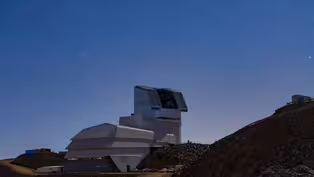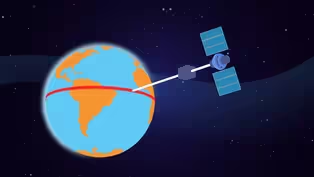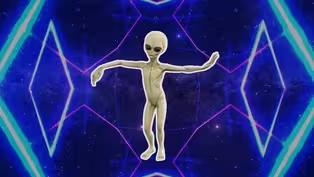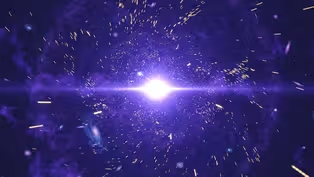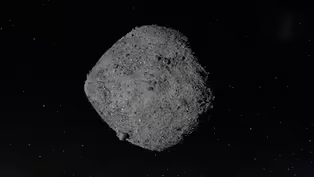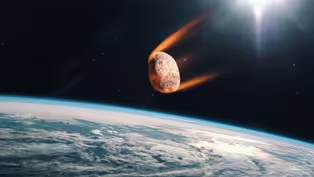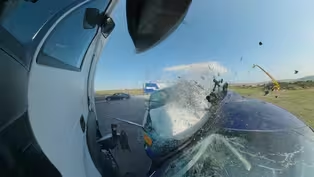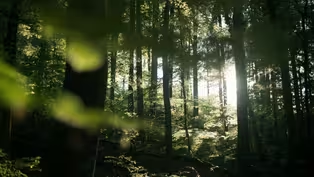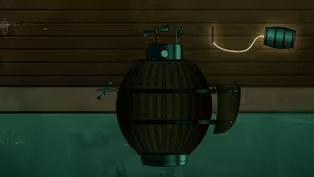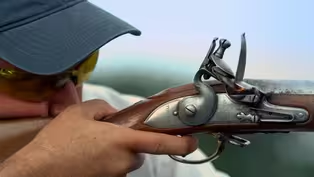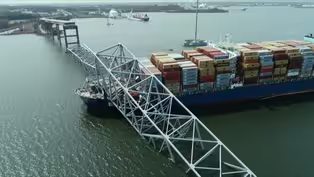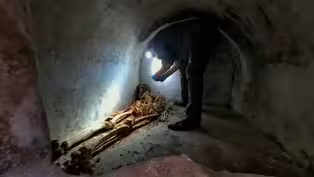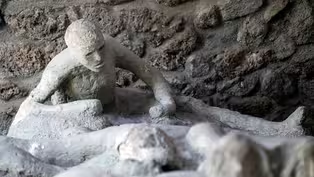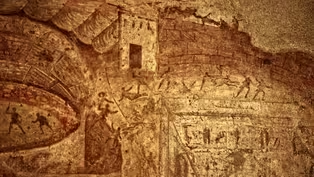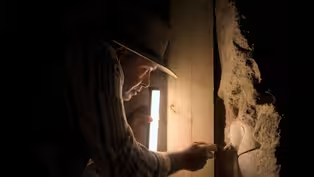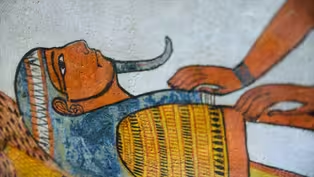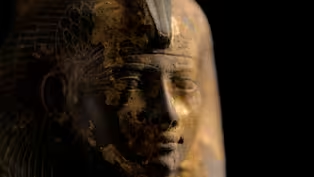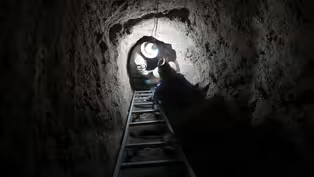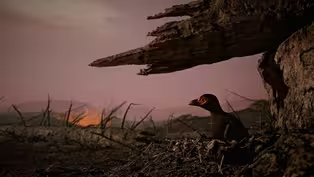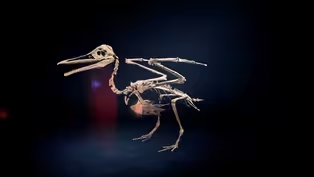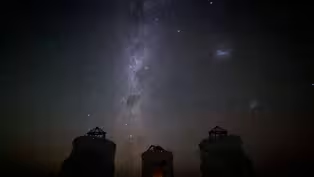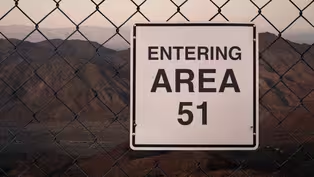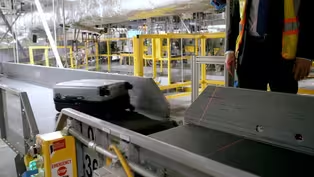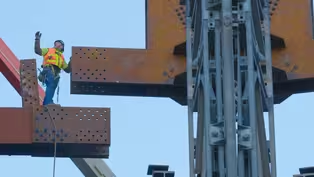
This Asteroid Might Make Impact With Earth in 2032
Clip: Season 52 | 3m 33sVideo has Closed Captions
An asteroid is on a collision course with Earth, possibly making impact in 2032.
An asteroid is on a collision course with Earth, possibly making impact in 2032. In the unlikely event that Asteroid 2024 YR does strike Earth, it would generate an explosion equal to nearly 8 million tons of TNT. That’s 500 times the power of the atomic bomb that was dropped on Hiroshima during WWII. But there’s no cause for alarm: Space agencies estimate there’s about a 2% chance of impact.
Problems playing video? | Closed Captioning Feedback
Problems playing video? | Closed Captioning Feedback
National Corporate funding for NOVA is provided by Carlisle Companies. Major funding for NOVA is provided by the NOVA Science Trust, the Corporation for Public Broadcasting, and PBS viewers.

This Asteroid Might Make Impact With Earth in 2032
Clip: Season 52 | 3m 33sVideo has Closed Captions
An asteroid is on a collision course with Earth, possibly making impact in 2032. In the unlikely event that Asteroid 2024 YR does strike Earth, it would generate an explosion equal to nearly 8 million tons of TNT. That’s 500 times the power of the atomic bomb that was dropped on Hiroshima during WWII. But there’s no cause for alarm: Space agencies estimate there’s about a 2% chance of impact.
Problems playing video? | Closed Captioning Feedback
How to Watch NOVA
NOVA is available to stream on pbs.org and the free PBS App, available on iPhone, Apple TV, Android TV, Android smartphones, Amazon Fire TV, Amazon Fire Tablet, Roku, Samsung Smart TV, and Vizio.
Buy Now
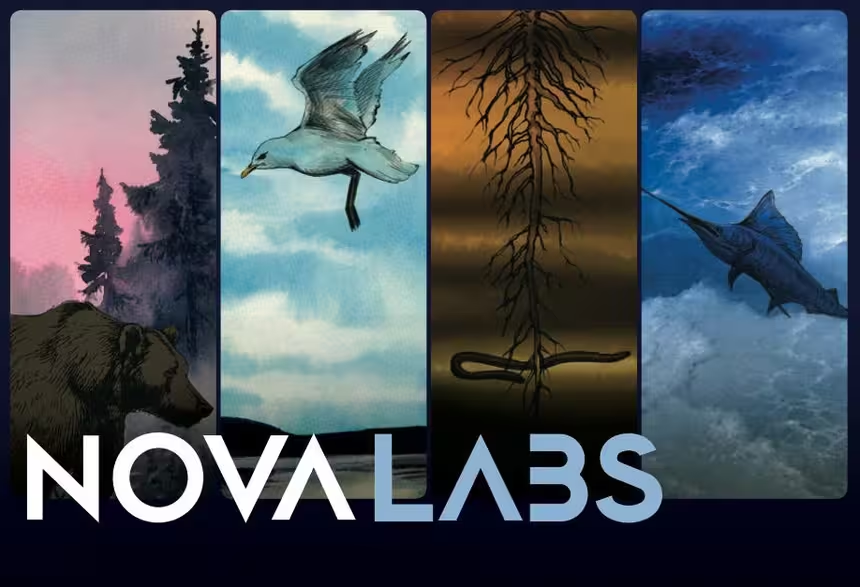
NOVA Labs
NOVA Labs is a free digital platform that engages teens and lifelong learners in games and interactives that foster authentic scientific exploration. Participants take part in real-world investigations by visualizing, analyzing, and playing with the same data that scientists use.Providing Support for PBS.org
Learn Moreabout PBS online sponsorship(dramatic music) - [Narrator] An asteroid might be on a collision course to hit Earth in 2032.
But what exactly are the odds of disaster?
And is there anything we can do about it?
Asteroid 2024 YR4 measures between 130 and 330 feet long.
It was spotted during its orbit around the sun traveling away from Earth in late December, 2024.
Thanks to ATLAS, a four-telescope alert system that identifies Near-Earth Objects.
Space agencies estimate that there's about a 2% chance that the asteroid will hit Earth in December 2032.
But as astronomers continue to track the asteroid and refine their calculations, they say that probability is likely to drop to zero.
After astronomers discovered the asteroid Apophis in 2004, they calculated it had about a 2.7% chance of colliding with Earth.
But after months of observations, scientists were able to update their predictions.
They determined that it'll pass very close to Earth in 2029, but the chances of collision are now zero.
They expect the same thing to happen with Asteroid 2024 YR4.
But in the unlikely event that 2024 YR4 does strike Earth, it would impact at a speed of around 38,000 miles per hour and generate an explosion equal to nearly 8 million tons of TNT.
That's 500 times the power of the atomic bomb that was dropped on Hiroshima during World War II.
It wouldn't be big enough to kickstart a mass extinction, like the one that led to the end of the dinosaurs.
That asteroid was about 150 to 250 times larger.
But it would have the potential to destroy a city, or if it lands in the ocean, which scientists think is more likely, the resulting tsunami could devastate nearby coasts.
The damage from the explosion on land could extend roughly as far as a 30-mile radius from the impact site.
NASA astronomers have come up with a "risk corridor," an area where impact would be most likely, given the asteroids current path.
This area goes from northern South America, across the Atlantic Ocean, to Africa, the Arabian Sea, and southern Asia.
As the asteroid continues on its orbit around the Sun, it'll begin to fade from view of Earth-based telescopes by mid-April 2025.
It won't be visible again until mid-2028, at which point, astronomers will be able to calculate a more accurate trajectory.
But what if the likelihood of impact goes up, and not down, as astronomers predict?
What then?
In 2022, NASA successfully crashed a spacecraft into an asteroid to change its trajectory.
Space agencies could try and do something similar with Asteroid 2024 YR4 to change its collision course.
This strategy is still experimental, but it's a promising way to defend our planet.
Although astronomers think the risk of Asteroid 2024 YR4 actually hitting Earth is very low, it highlights a potential new trend.
As telescopes and cameras have gotten better at finding objects wandering around the solar system, this type of warning will likely become more common.
But don't take that as a harbinger of doom.
Just because we're better at detecting potentially hazardous asteroids doesn't mean our risk is any greater.
How Harvard Discovered It Has an Original Copy of the Magna Carta
Video has Closed Captions
Clip: S52 | 3m 13s | They paid only $27.50 for it from a London bookseller in 1946. (3m 13s)
This Giant Telescope Will Reveal The Universe in Unbelievable Detail
Video has Closed Captions
Clip: S52 | 5m 59s | Go behind the scenes as NOVA visits the Vera Rubin Observatory in Chile. (5m 59s)
The Science of Scratch-Offs: What Your Brain Can’t Resist
Video has Closed Captions
Clip: S52 | 6m 39s | You probably won’t win big playing the Lottery but your brain may want to keep trying. (6m 39s)
These Smart Glasses Know Who You Are, and Much More
Video has Closed Captions
Clip: S52 | 4m 18s | Two students created glasses that can identify people on the street, without them knowing. (4m 18s)
The Rocket-Less Future of Space Travel
Video has Closed Captions
Clip: S52 | 5m 17s | Space elevators? Nuclear rockets? The future of space travel could look radically different. (5m 17s)
Do Aliens Exist? This Famous Equation Offers a Clue
Video has Closed Captions
Clip: S52 | 5m 4s | The Drake Equation helps scientists estimate the odds of finding intelligent alien civilizations. (5m 4s)
Video has Closed Captions
Clip: S52 | 5m 7s | If the universe as we know it started with the Big Bang, will it also have an end? (5m 7s)
Building Blocks of Life Discovered on Distant Asteroid
Video has Closed Captions
Clip: S52 | 6m 3s | Scientists have discovered the building blocks of life in samples retrieved from a distant asteroid. (6m 3s)
This Asteroid Might Make Impact With Earth in 2032
Video has Closed Captions
Clip: S52 | 3m 33s | An asteroid is on a collision course with Earth, possibly making impact in 2032. (3m 33s)
Ultimate Crash Test: Countdown Preview
Video has Closed Captions
Preview: S52 Ep10 | 30s | A first-of-its-kind experiment aims to stage a multi-vehicle pileup to gain new data on car safety. (30s)
Critical Condition: Health in Black America Preview
Video has Closed Captions
Preview: S52 Ep9 | 30s | After centuries of pseudoscience, researchers examine the causes of racial health disparities. (30s)
Why Just Planting Trees Won’t Save the Planet
Video has Closed Captions
Clip: S52 Ep8 | 3m 4s | Could restoring lost forests help slow climate change? (3m 4s)
Video has Closed Captions
Preview: S52 Ep8 | 30s | Follow scientists in a quest to understand how complex forest ecosystems can help cool our planet. (30s)
The World’s First Combat Submarine
Video has Closed Captions
Clip: S52 Ep7 | 10m 49s | Its nickname was the “Turtle”. (10m 49s)
Revolutionary War Weapons Preview
Video has Closed Captions
Preview: S52 Ep7 | 30s | Explore key military technologies in the American colonies’ fight for freedom. (30s)
Video has Closed Captions
Clip: S52 Ep7 | 4m 57s | A team of experts put an 18th-century musket to the test — revealing how deadly it really was. (4m 57s)
What Went Wrong on the Dali Before the Baltimore Bridge Collapse
Video has Closed Captions
Clip: S52 Ep6 | 2m 57s | The container ship Dali lost power causing it to crash into Baltimore’s Key Bridge. (2m 57s)
What Caused Baltimore’s Key Bridge to Collapse?
Video has Closed Captions
Clip: S52 Ep6 | 2m 57s | Engineers explain how a vulnerability made the bridge open to catastrophe. (2m 57s)
Baltimore Bridge Collapse Preview
Video has Closed Captions
Preview: S52 Ep6 | 30s | Follow the investigation into the deadly container ship collision that closed the Port of Baltimore. (30s)
This Pompeii Priest Had an Unexpected Rise to Power
Video has Closed Captions
Clip: S52 Ep5 | 2m 58s | In a recently discovered tomb in Pompeii, archeologists made a startling discovery. (2m 58s)
Pompeii's Secret Underworld Preview
Video has Closed Captions
Preview: S52 Ep5 | 30s | Archaeologists uncover new truths about Pompeii, a wealthy Roman playground with dark secrets. (30s)
A Brutal Gladiator Fight in Ancient Pompeii
Video has Closed Captions
Clip: S52 Ep5 | 2m 37s | At a gladiator match in ancient Pompeii, tensions exploded and spectators became fighters in a riot. (2m 37s)
What's Inside These Ancient Egyptian Jars?
Video has Closed Captions
Clip: S52 Ep4 | 1m 58s | A nearly 3,000-year-old canopic jar is discovered in an Egyptian tomb. (1m 58s)
Opening a Sealed Egyptian Tomb
Video has Closed Captions
Clip: S52 Ep4 | 2m 38s | Archaeologists remove the mud brick seal of an unopened Egyptian tomb. (2m 38s)
How the Afterlife Shaped Ancient Egypt
Video has Closed Captions
Clip: S52 Ep4 | 1m 15s | Discover why the ancient Egyptians invested so much in life after death. (1m 15s)
The God’s Wife of Amun: Powerful Women in Ancient Egypt
Video has Closed Captions
Clip: S52 Ep4 | 3m 3s | Discover a time in Ancient Egypt when women held a role with extraordinary power. (3m 3s)
Video has Closed Captions
Preview: S52 Ep4 | 30s | A long lost ancient cemetery opens the door to a unique period in Egyptian history. (30s)
How Birds Survived the Dinosaur Apocalypse
Video has Closed Captions
Clip: S52 Ep3 | 2m 48s | Birds are today’s only living dinosaurs, but how did they survive the asteroid? (2m 48s)
How Birds Evolved to Fly (feat. Slow-Mo Baby Birds)
Video has Closed Captions
Clip: S52 Ep3 | 2m 56s | Slow-motion footage of baby birds helps scientists uncover how their ancestors took to the skies. (2m 56s)
Video has Closed Captions
Preview: S52 Ep3 | 29s | Fossils reveal how birds survived the killer asteroid and became today’s only living dinosaurs. (29s)
What You’re Probably Seeing If You Spot a UFO
Video has Closed Captions
Clip: S52 Ep1 | 2m 17s | Our skies are full of objects, natural and manmade, that are not as strange as you might think. (2m 17s)
Video has Closed Captions
Preview: S52 Ep1 | 30s | Can science reveal the secrets of mysterious objects seen in our skies? (30s)
Is the Government Hiding Information on UFOs?
Video has Closed Captions
Clip: S52 Ep1 | 1m 3s | What does the government know about UFOs? Experts weigh in on the need to identify these objects. (1m 3s)
Area 51: UFO Sightings and an Infamous Government Cover-Up
Video has Closed Captions
Clip: S52 Ep1 | 2m 35s | Area 51’s UFO myths became a cover for secret testing of cutting-edge military technology. (2m 35s)
What Happens to Your Checked Bag at the Airport?
Video has Closed Captions
Clip: S52 Ep2 | 2m 34s | Getting the right bag to the right plane requires an ingenious system. Here’s how it works. (2m 34s)
Extreme Airport Engineering Preview
Video has Closed Captions
Preview: S52 Ep2 | 30s | Follow the race to build a world-class airport on the site of one of America’s busiest flying hubs. (30s)
The $8 Billion Overhaul of LaGuardia Airport: Engineering a New Era
Video has Closed Captions
Clip: S52 Ep2 | 2m 12s | Discover how an $8 billion transformation turned LaGuardia into a state-of-the-art facility. (2m 12s)
Providing Support for PBS.org
Learn Moreabout PBS online sponsorshipSupport for PBS provided by:
National Corporate funding for NOVA is provided by Carlisle Companies. Major funding for NOVA is provided by the NOVA Science Trust, the Corporation for Public Broadcasting, and PBS viewers.


